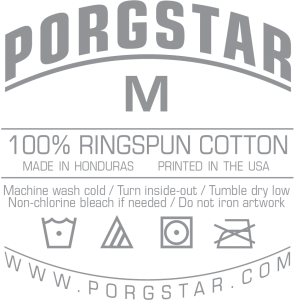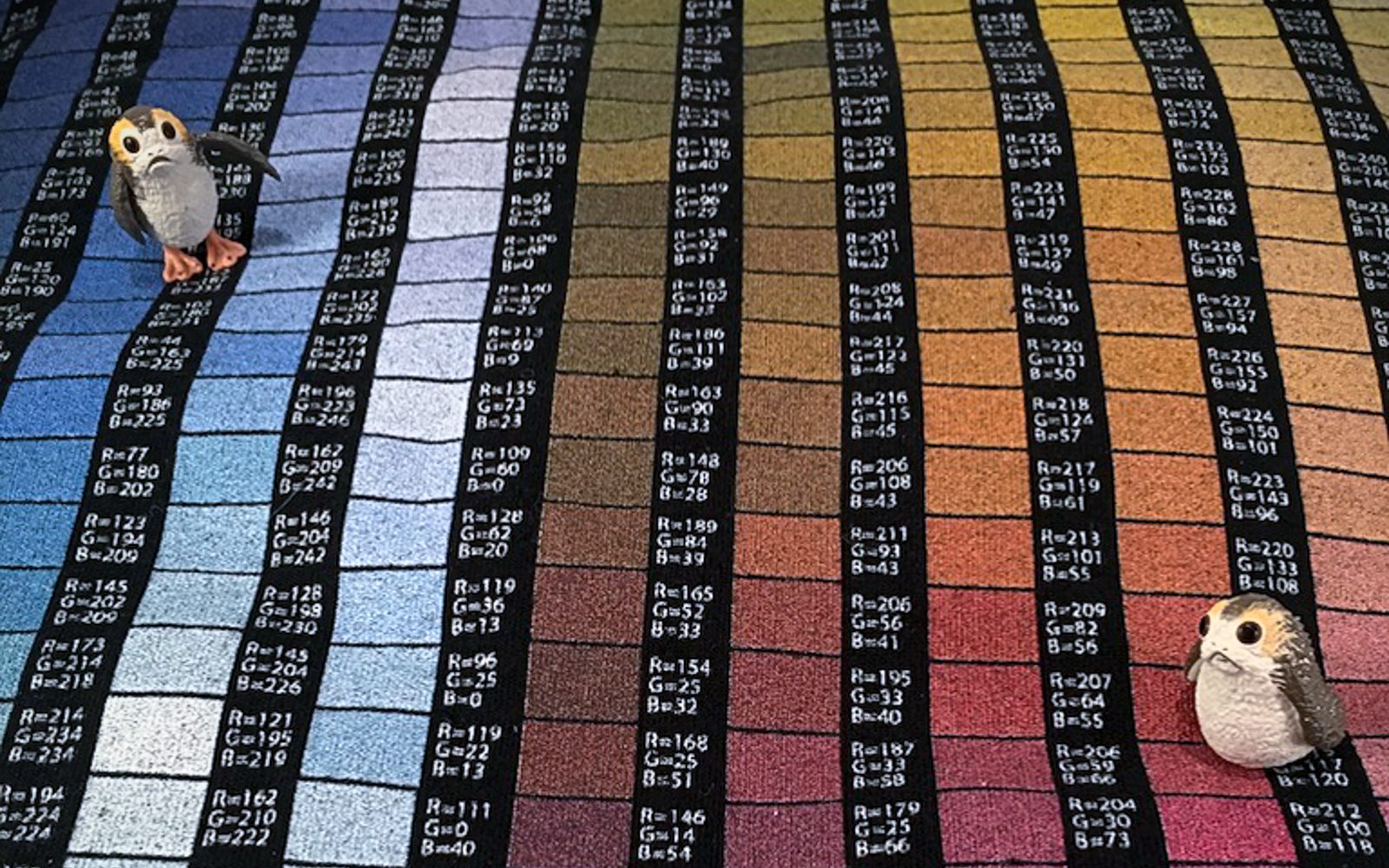Our awesome printing partner uses the latest Direct-to-Garmet (DTG) print technology. While similar in look and feel to traditional screen printing it is a very different printing process and here are some things you might want to know.
How is it Printed?
Think of a DTG printing press as a big inkjet printer similar to the one you have at home, only instead of printing on paper it prints on fabric. With traditional screen printing you can only print one color at a time using individual color screens. This can get very time intensive when printing a design with more than just a few colors. The DTG printing process prints all the colors at once like your home printer and at near photo quality resolution. This allows for a lot more flexibility in designs and is much faster when printing only a few shirts of a given design at a time.
One of the big advantages of this printing process is that it allows us to print on demand. It’s kinda like ordering food at a restaurant. We don’t print it until you order it!
Here’s a quick video we put together showing highlights of our partner’s t-shirt print and prep process:
Why is there a funny residue on the fabric of my new shirt?
Here’s the answer direct from our printing partner:
“You may notice an off-white residue and vinegar smell on your apparel. Don’t worry! It’s from a fixation agent applied during printing and it’s not permanent.
Fixation agent (sometimes known as pre-treatment) is used for all DTG prints across the industry. It’s needed so ink bonds with the fabric. Without it, ink would flake off the garment. You can think of it sort of like applying a primer before painting a wall.
The fixation agent can sometimes leave a faint square imprint around the print, and other small white marks on the garment. Your DTG apparel might also have a vinegar smell that gets stronger the longer it’s in the poly bag packaging.
The solution is simply to wash the garment! Neither the residue nor the smell is permanent and both should go away after one wash.”
How should I care for my new shirt?
The DTG printing process is just as durable as traditional screen printing when it comes to washability and we want the design on your shirt to last as long as possible. Be wary of washing and drying on a high setting, especially when the garment is 100% cotton. High-temperature washes can fade and crack the print, and a high-temperature dryer settings can shrink the garment, as well as damage the print.
In order for you to prolong the life of your custom print, we suggest following the care instructions below:
Machine wash cold, inside-out, gentle cycle with mild detergent and similar colors. Use non-chlorine bleach, only when necessary. No fabric softeners. Tumble dry low, or hang-dry for longest life. Cool iron inside-out if necessary. Do not iron decoration. Do not dry clean.
As much as we’d love for you to visit Porgstar over and over, we know you’re not going to stop by just for care instructions. So we make sure to include them on every shirt. Here’s an example:

Are the inks used safe?
The inks used by our printing partner are water based and eco-friendly. This makes the feel much softer than traditional screen printed shirts, but just as durable. The inks are also CPSIA (Consumer Product Safety Improvement Act) compliant, which are required when printing on children’s wear 12 and below.
For those of you who would like a slightly more technical answer, the inks are Brother GT-3, water based pigment inks. GT-3 inks are CPSIA compliant and Oeko-Tex™ certified, which means they are safe to print on youth/children’s clothing and reduce environmental waste. Also, GT-3 inks provide a high washing colorfast AATCC rating of 4.
It looks like there is a layer of white beneath the image. Why is that?
The white layer is referred to as a white under base and it is just that, a base layer of white ink that sits below the printed image. Think of the under base as a light colored primer meant to prepare a surface for darker colors. It is used primarily in two cases:
- If the printed design contains white and is printed on a non-white t-shirt.
- If the printed design doesn’t contain white but is generally lighter than the t-shirt color.
White under base isn’t needed or printed on white garments. Depending on the design a white under base may not be used at all.
What about California Proposition 65?
If you’re asking this you must live in California like we do. Proposition 65, officially known as the Safe Drinking Water and Toxic Enforcement Act of 1986, was enacted as a ballot initiative in November 1986. The proposition protects the state’s drinking water sources from being contaminated with chemicals known to cause cancer, birth defects or other reproductive harm, and requires businesses to inform Californians about exposures to such chemicals.
We can proudly state that none of the fabrics or inks used in our t-shirts contain chemicals on the Prop 65 watch list.
If you have any questions about our printing partner or process, please drop us a line. We don’t type very fast but we’ll respond as quickly as possible.
Cheers!
Ford and Arthur Porg

